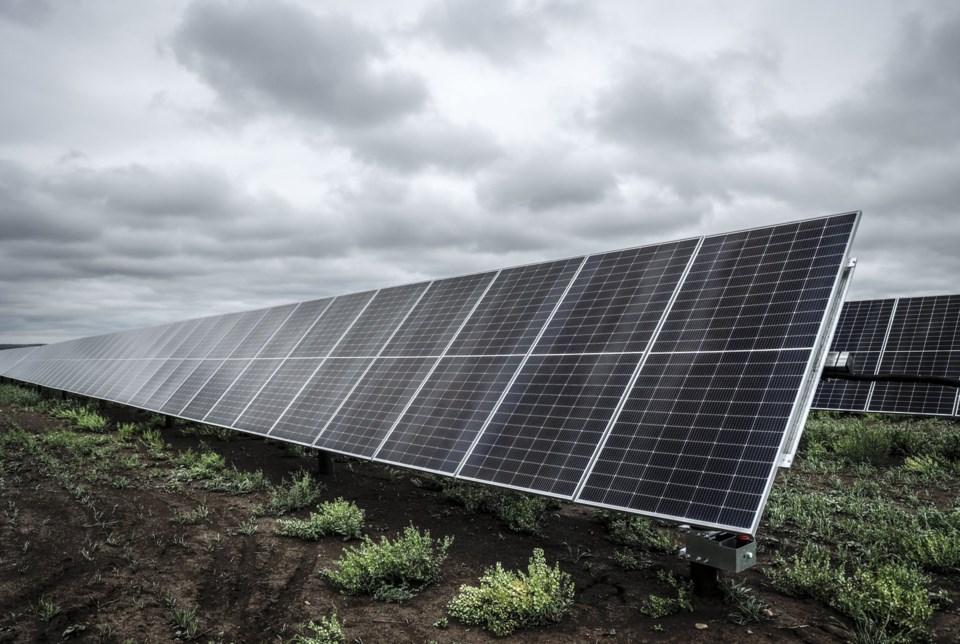EDMONTON — Alberta's government is looking to power some of its jails with solar energy.
The province says it's planning to build solar installations at five of its 10 correctional facilities, with early energy cost savings estimated at $1 million per year.
"The solar installations are expected to offset approximately 80 per cent of the energy used at each site," Michael Kwas, press secretary for Infrastructure Minister Martin Long, said in an email.
He said the estimated savings will likely change as the installations are further designed.
A procurement document published by the province, which lists future projects with approved construction funding, says the government's budget for the solar proposal is anywhere from $10 million to $50 million.
Like the savings, the budget figure is also preliminary, Kwas said. A more exact estimate would be determined later as planning progresses.
While the ministry didn't say which jails have been chosen, Kwas said two are in the Edmonton area and three are around Calgary.
"The significant amount of non-agricultural land, underutilized land on these sites presents an ideal opportunity for ground mounted solar installations," Kwas said.
There are three provincial jails in the capital region: the Edmonton Remand Centre, which houses those awaiting trial; the Edmonton Young Offender Centre, directly beside the remand centre; and the Fort Saskatchewan Correctional Centre, northeast of Edmonton.
Calgary has a remand centre, a young offender centre and a correctional centre, all of which are built beside each other. There are also correctional facilities in Lethbridge, Medicine Hat, Peace River and Red Deer.
Some other government-owned buildings are already equipped with alternative energy generation systems, Kwas said, but didn't provide examples.
"None of the (existing) installations are as large as those planned for the correctional centres."
Kwas added the Edmonton facilities use about 11,500 megawatt hours of energy annually. Calgary's total is roughly 6,300 megawatt hours per year.
Alberta-based utility supplier ATCO says the average home in the province uses roughly seven megawatt hours annually.
The procurement document says the province plans to start accepting bids to build the solar arrays later this year or in early 2026.
Stephen Legault, an Alberta-based senior manager with advocacy group Environmental Defence, said he doesn't know if other jails in Canada are solar powered, but he'd be thrilled if Alberta were breaking new ground.
"When little announcements like this come out that suggests somebody is thinking rationally within the government about our energy future, it makes me pretty happy," Legault said.
"It's a great idea."
The office of federal Public Safety Minister Gary Anandasangaree said no prisons currently run on solar power.
"We wish the Alberta government well in their pursuit of renewable energy solutions to power their correctional facilities," a spokesperson says in an email.
While it seems to be a unique proposal in Canada, using solar energy to power jails and prisons is almost common south of the border.
Ned Lamont, governor of Connecticut, announced earlier this year seven state-run correctional facilities were being powered in part by new solar arrays expected to save the government USD$11 million over the lifespan of the panels.
“Installing solar energy systems at correctional facilities is a way that we can deliver cost savings in the operations of state government while also reducing our carbon footprint,” Lamont said in an April news release.
There are also examples in Colorado and California.
The Santa Rita Jail, near Dublin, Calif., had the largest rooftop solar installation in the entire United States when nearly 10,000 panels were installed between 2001 and 2002.
Legault said he was somewhat surprised by Alberta's plan.
The province put a seven-month moratorium on project approvals for solar and wind energy in 2023, along with "draconian" rules on new projects that restrict where new solar and wind farms can be built.
Kwas said the infrastructure ministry is always looking for ways to improve efficiency and reduce costs, "including innovative energy solutions that minimize environmental impact."
Legault said Alberta shouldn't stop at jails when it comes to putting up new solar arrays on or around provincially owned buildings.
"The only barrier is ingenuity, creativity and cash. And the third one is something that I will admit is always difficult," Legault said.
"My hope would be that it would lead this provincial government to realize that renewable energy isn't necessarily the boogeyman."
This report by The Canadian Press was first published Aug. 18, 2025.
Jack Farrell, The Canadian Press



